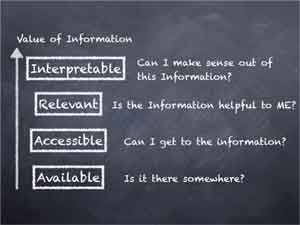At the PICNIC site I found this slideshow on the posters for the upcoming festival, some very nice posters! Great work!

At the PICNIC site I found this slideshow on the posters for the upcoming festival, some very nice posters! Great work!

The world of processes and information is a world closely linked. The reason to manage your information is that it has value in the processes of your organization. If this is not the case why bother? Let’s look at the sorts of information that have value in the world of processes.
Describing the process is the first step. This can be done in either simple Word document or in a structured way like BPMN. The biggest challenge is to ensure that descriptions are as close to reallity as possible. There is a trade-off between ease of use and integration capabilities between using a corporate Word template (being far more easy and flexible) and using BPMN (because implementing a process from a technical point of view becomes far more easy).
Input and output of a process can be pieces of information. A client filling out a request form for an insurance is an input to a process. A newspaper is an output of a process. It is imperative that these pieces of information are tightly managed to ensure quality and stay inside the magic, six sigma objective of 3.4 DPMO (defects per million opportunities).
Exhaust information that enables analysis of process performance. Each time a process is executed, it generates information. This information is used in a business intelligence (BI) and/or business analytics environment to diagnose the flow of processes and enables improvement.
During a process actors communicate with each other about the product and process. This communication adds value and should be stored for future benefit. The information that is generated during communicating, like emails or IM discussions, is important because it shows how value is added in a process.
 The four barriers for information productivity of course all apply to all four types of information in BPM. Let’s focus on process descriptions. If descriptions are not available to the people working on the process how can they execute the process as designed? If the workers are not able to retrieve the descriptions when they are available the same problem applies. If the descriptions are not relevant they are not adding value for the people working on the process. If the people that are working on the process cannot interpret the descriptions they will make the wrong decisions even if they have read the description. The consequence is that the highest levels of business performance are only possible if all barriers of information are removed.
The four barriers for information productivity of course all apply to all four types of information in BPM. Let’s focus on process descriptions. If descriptions are not available to the people working on the process how can they execute the process as designed? If the workers are not able to retrieve the descriptions when they are available the same problem applies. If the descriptions are not relevant they are not adding value for the people working on the process. If the people that are working on the process cannot interpret the descriptions they will make the wrong decisions even if they have read the description. The consequence is that the highest levels of business performance are only possible if all barriers of information are removed.

Yesterday I had a very nice discussion on the application of the 80/20 rule (aka the Pareto Principle) on social media. The nicest application of this rule is by Timothy Ferriss in the 4 Hour Workweek. He states that 20% of your customers take up 80% of your time. So you need to lose these customers to save 80% of your time. Social Media is all about conversations, this will mean that 20% of your network will take up 80% of your time on social media. Unlike the example of the 4 Hour Workweek, this is a good thing. In social media you want to engage with as much of your network as possible. Hopefully the 90-9-1 rule which segments your visitors in 90% ‘lurkers’, 9% contributors and 1% creator is a low estimate and 80/20 is more applicable!
What do you think?
(the elderly gentleman in the picture is Vilfredo Pareto, courtesy to wikipedia for the nice picture)